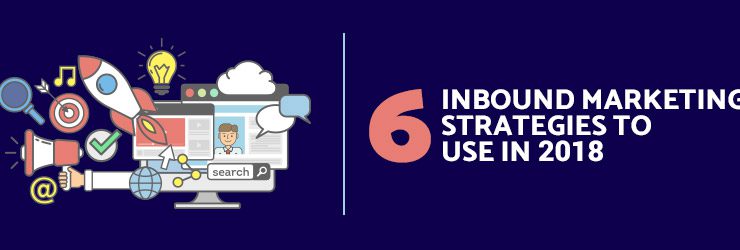2018 is roaring by — full steam ahead. Opportunities are exploding in the global marketplace. Are you ready? Do you have diverse inbound marketing strategies in place to achieve your business goals?
Companies across industries, from e-Commerce to Manufacturing, need to have targeted, creative, and strategic plans to strengthen existing customer relationships — and engage and excite new ones.
If your inbound marketing is lacking, here are 6 strategies to get you re-engaged and back on track in 2018.
6 Strategies to Take Your Inbound Marketing to the Next Level
-
-
Social Media Channels: Hit the Right Targets
-
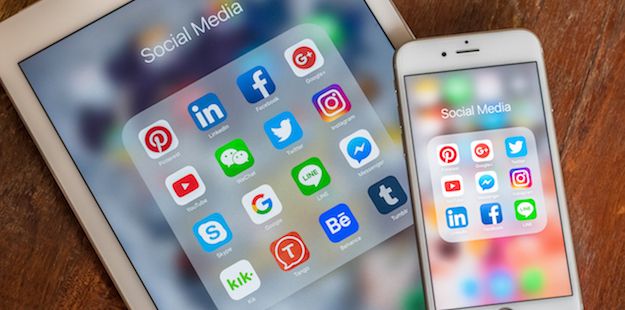
Think of social media as a gateway to your content and offers. Whether you want people to read your most recent blog post or you want them to sign up for your newest eBook, social media is a simple way to promote your content, attract visitors and convert them to leads. However, if you’re not using the right channels and not focusing on the right audience, the chances of increasing conversions are slim.
Are you clear on who your target audience is for 2018? Demographics are critical for a healthy and effective inbound marketing program. Dig into your current marketing strategy and make sure you’ve created the right buyer personas and you’ve set up the proper social channels to engage with them. As social media trends change, review and update your inbound marketing strategies. Also, tune in and understand how each platform works. How you communicate your message on Facebook doesn’t necessarily translate the same on LinkedIn. Know your audience!
-
-
Lead Generation and Conversion: Drivers for Success
-
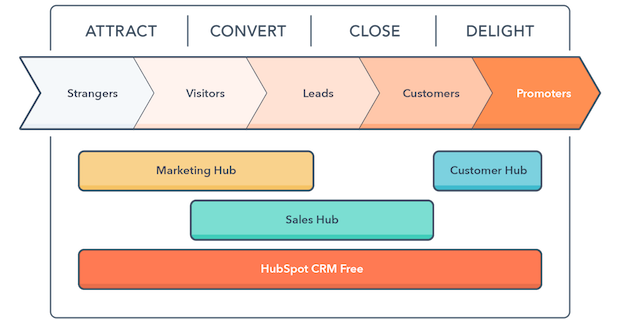
Photo courtesy of HubSpot
Effective inbound marketing drives sales leads and turns them into customers. With organic, SEO-rich, sensational content, you can drive ever-increasing traffic to your site, but also convert more viewers into consumers.
If you’re a novice to Inbound Marketing, or just need a refresher course, HubSpot has done a great job of explaining the Inbound Marketing Methodology, and we highly recommend you check it out. The concept? You’ll need to determine how you are going to attract new customers, drive them to your website, convert them to leads, then customers, and make them so happy with your products and services that they’re willing to sing your praises and convince others to do the same. It requires doing your research, understanding the behaviors of your audience and developing content and offers that will draw them in. You have to do your work!
To start, gather your data:
-
-
- Social media and website traffic
- Lead and sales conversions
- Customer retention
- Organic search traffic
- E-Commerce sales
-
Data analytics will proudly serve as your best friend in 2018 for optimizing your inbound marketing strategies. Research and determine what adjustments you need to make and how you’re going to implement them. Do you need to re-examine your content and keywords? Are you on the right social media channels delivering the right message? Whatever the issues are, and it could be more than one, identify, adjust and test. It’s a process you will need to adjust and refine as trends change.
If you’re having trouble putting together the right strategy for your inbound marketing, consider hiring an inbound marketing agency. They specialize in creating impactful, strategic content on websites and social media channels to help generate leads, increase conversion rates, and improve your ROI
-
-
Email Marketing: Customization & Automation
-
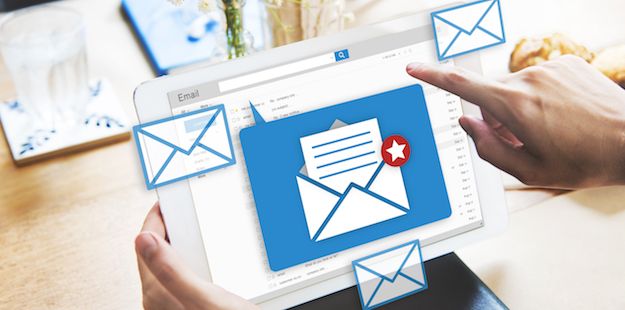
Email marketing will continue to survive and thrive in 2018. It will be all about efficiency and finely-tuned messaging and branding. And if you haven’t fine-tuned your messaging and branding, stop now! Seriously, work on that, get it right, and then get back to this article. It’s that important.
Ok, where was I? Oh, yes… Email marketing.
Email still has the ability to be a big revenue generator, and customization and automation reign supreme. In fact, there has been an uptick in B2B marketing automation — with 49 percent of all marketing using the technology. If you don’t have an automated platform set up yet, there are some big players in the industry, such as MailChimp and Constant Contact.
When it comes to email customization, be sure to be hyper-focused with your messaging. Target the questions your customers are relying on your site, chats, and social media channels to answer. Maintaining relevancy and offering the right products and services to address these pain points will be necessary to make your email marketing campaigns effective in helping to meet your revenue goals.
-
-
Blogs: Strategy Matters
-

Blogs serve as a very useful branding and connectivity tool for your customers. Delivering fresh, rich, regular content helps to increase your search engine rankings too. Addressing pain points while integrating keywords and optimizing your content for SEO is a great way to get search engines to notice you and gain website traffic.
If you don’t have the resources to maintain your blog, an inbound marketing agency has the expertise and resources (including vast image libraries) to attract, engage, and ensure alignment with branding parameters. Perform a concerted review of your blog and include these components in your inbound marketing strategy:
-
-
- Multiple media formats — embedded videos, gifs, graphics, tweets, etc
- Relevant and trending topics — from multiple sources including your best promoters
- Seasonal content — centered around product launches, popular buying holidays, and events
- Refresh older blogs — review your data on shares, comments, and re-optimize the best ones
-
Sites lose viewers quickly when content is stale or off-target. What matters to your customers, right now, should be a high priority for your blog.
-
-
Brand Activation: Driving Your Customer to Act
-
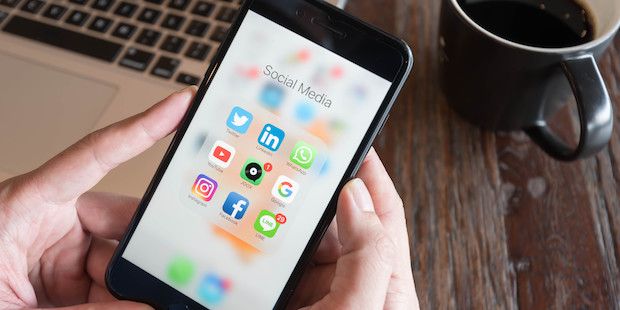
Brand activation = big money. It is expected that in 2018, the spending on brand activation worldwide will exceed $700B. This inbound marketing discipline focuses on driving consumer action through brand interaction and experiences. It’s about interactivity. Creating unique user experiences with such techniques as Instagram photo contests, IRL celebrity events, company surveys, themed video contests, and more brings engagement to the next level.
Certainly, it is critical to monitor social media activity related to your brand and interact with your customers directly via shares, comments, likes, etc. — but driving your customers to act in new and thrilling ways is a tool in your inbound marketing toolbox that should not be ignored. It can truly differentiate you from your competition, strengthen the emotional connection with your customers, and make a real impact on the achievement of both short-term and long-term profits.
-
-
Video: Dynamic, Targeted, Consistent
-

Video’s climb to the top of the consumed media mountain is unmistakable. In an ever-increasing mobile and visual world, dynamic, targeted video (delivered on a consistent basis) is an indispensable component of your inbound marketing strategy. From unfiltered, off-the-cuff pieces to highly-polished high-dollar vignettes, customers demand more, more, more. Do you have a plan in place for your delivery of video content throughout the year?
The stats have proven time after time that video helps to generate better quality leads, higher conversions, motivated and engaged brand advocates, and an increase in previously untapped audiences. Place videos across your platforms and sites: landing pages, product pages, social media channels, and more. Don’t be afraid to try animation and humorous gifs (in alignment with your branding!). Tastes and trends continue to evolve with visual media, as augmented and virtual reality will undoubtedly escalate (i.e., iPhone X). Be creative and consistent, and your customers will keep coming back.
Are you ready to tackle and empower your inbound marketing strategies for 2018? Incorporating the above techniques including relevant and energizing video, blog content, email marketing, and other strategies increases your opportunities for new streams of revenue and provides a template for success with comprehensive advertising and marketing initiatives.
